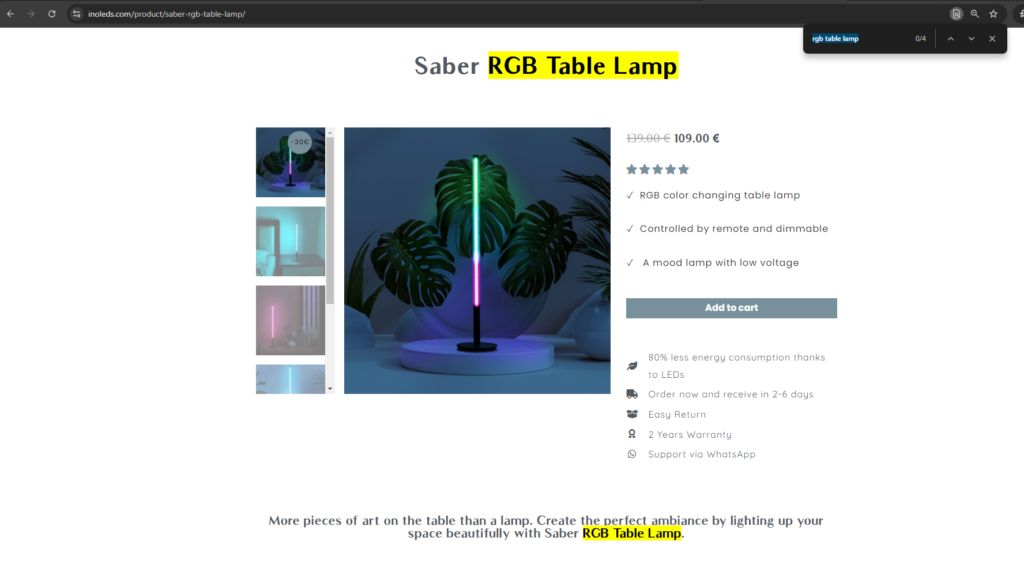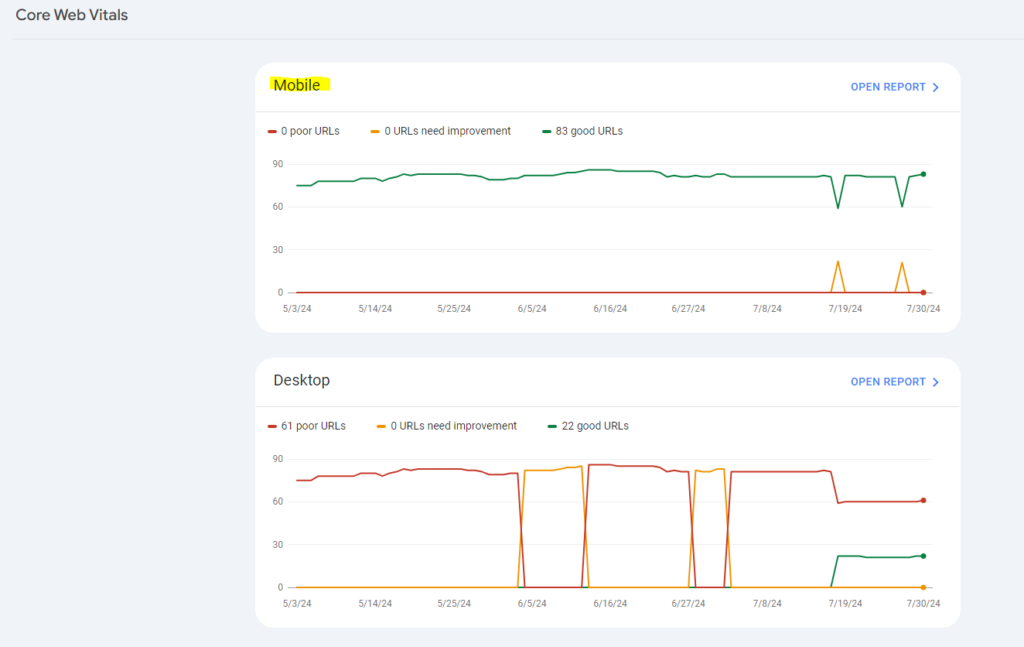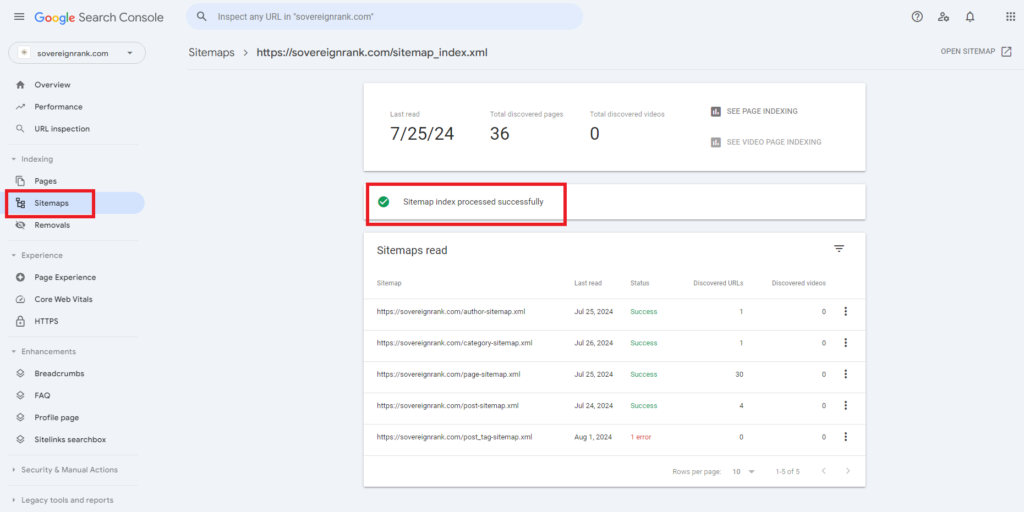NJ SEO Agency » Blog » Ecommerce SEO Checklist: 8 Steps to Optimize Your Online Store and Increase Sales
Having a well-optimized online store is important for driving traffic and boosting sales. Our ecommerce SEO checklist provides you with 8 essential steps to enhance your store’s visibility and performance on search engines. Follow this guide to ensure your ecommerce site stands out and attracts more potential customers.
There’s so much competition when it comes to selling your products online. There’s also a lot of challenges when it comes to ranking ecommerce websites within the search engines. Which is why we are here to guide you with our ecommerce SEO checklist to give you the edge you need to stand out from the crowd.
Search engine optimization is the main priority you should be doing to your ecommerce site. A solid SEO strategy can help bring in organic traffic that is cost efficient and sustainable over the long term compared to any other marketing strategy.
Approximately 39% of global eCommerce traffic originates from search engines, while organic search accounts for about 33% of overall traffic to eCommerce sites. This emphasizes the importance of optimizing for search engines to attract potential customers.
All these factors culminate in a powerful competitive technique – search engine optimization for online stores, also known as eCommerce SEO. While paid advertising relies on budget, SEO thrives on effort and strategy.
Jump to a step:
On-page SEO is highly relevant when it comes to an ecommerce website. optimizing your on-page SEO ensures that you are driving strong SEO signals for the relevant keywords you are targeting. Unlike other websites, an ecommerce site requires these on-page adjustments to be implemented at scale.
Learn more with our on-page SEO checklist
Keyword research is the foundation of your SEO strategy, helping you find potential customers searching for specific terms and phrases related to your products.
When you conduct keyword research, it’s important to know your market and the search intent for your selected target keywords. For example, when you enter a question on Google, the search engine attempts to find the most relevant match to your query.
Types of keywords based on search intent:
Informational Intent: Guides, how-to’s, listings, and opinion articles.
Navigational Search Intent: Pricing pages, about pages, and similar content.
Transactional Intent: Product pages, category pages, and individual lead generation landing pages.
Commercial Search Intent: Visual content, e-books, product reviews, and roundups.
Your product and category pages on your ecommerce website revolve around transactional keywords. This means you should target keywords that indicate transactional intent, such as keywords containing “discount”, “buy”, “for sale”, “deals” or words that have specific product details.
When you start strategizing your keyword research start with mapping all keywords to their corresponding landing pages on your site. Ideally, each keyword group should have a dedicated landing page, achieving a 1:1 match to the target keyword.

For keywords that have no associated page, create a new one to be mapped to that target keyword. This can potentially be achieved by leveraging existing content generated through faceted navigation or the site’s internal search data. Using a tool like Ahrefs can help perform a keyword site analysis that can give you your current keyword data and rankings.
You can also drive top-of-the-funnel traffic to your product and category pages with informational keywords. Such keywords contain “best”, “how to”, “top” and “product reviews”. These are long tail keywords that can be blogs you can internally link to your product landing pages to boost page authority by passing valuable link equity from high-quality content.

After creating a list of keywords through your keyword research, it’s important to strategically incorporate these keywords into the titles and descriptions of your product pages.
When it comes to ecommerce SEO optimization, keyword density is an important factor (DO NOT KEYWORD STUFF). This means using the target keyword a certain amount of times depending the length of the content where it makes sense and flows naturally.
For example: https://inoleds.com/product/saber-rgb-table-lamp/, uses the keyword “RGB Table Lamp” within the H1 and within the copy of the content. This not only informs the customers about the product but also signals to search engines about the relevance of the page for that particular keyword.

Just because you are running an online ecommerce store doesn’t mean you won’t benefit from having a blog. Having content with informational keywords can help you drive more new users to your online store.
Having a content marketing strategy with long-tail keywords for your blog has less competition, meaning it’s easier to drive more organic traffic. Using the example of rings, if you write an article around the keyword “allergy to certain metals in rings” and showcase certain hypoallergenic rings you have that do not trigger an allergic reaction within that article, you can drive potential customers interested in your content.
Additionally, any supporting content you create will enhance your authority in your niche and improve the ranking of your commercial pages.
Having a well-organized site structure not only improves user experience, but it boosts your ecommerce SEO efforts. By focusing on internal links and internal linking, you can guide visitors through your website more effectively and help search engines understand your content better.

Start by organizing your product pages and product category pages in a logical manner. Ensure that each page is easily accessible within a few clicks from the homepage with appropriate internal links that are contextual. This not only improves navigation but also distributes page authority across your site, making it easier for search engine crawlers to index your pages.

Technical SEO is extremely important step when it comes to an ecommerce website SEO checklist. This focuses on improving your ecommerce website experience making it easy for search engine bots to crawl your site. Proper technical SEO practices can significantly improve your search engine rankings.
Here’s a technical SEO checklist to help you out:
Over the last year, it’s estimated that 56% of all online sales came from mobile devices. Google prioritizes the mobile version of your ecommerce site over the desktop version.
If your website pages aren’t optimized for mobile devices, your rankings won’t improve much. Therefore, you must ensure all technical issues, especially Core Web Vitals, are resolved for mobile.
You can use Google Google Search Console or run a site audit to help you identify any errors your website may have on a mobile interface.

Page speed is an important component when it comes to ecommerce SEO. This is not only a ranking factor when it comes to the search engine but it also helps user experience, which will contribute to your ecommerce success.
A slow-loading website can frustrate your customers and drive them away.
Schema markup is a form of structured data that helps search engines understand the content of your web pages by providing context and meaning through specific tags, enhancing the way your website is displayed in search engine results.
Implementing structured data for your products improves the display of product information, leading to higher click-through rates and increased sales.
To increase signals for search engine crawlers to index your page, we recommend uploading your XML sitemap to Google Search Console and Bing Webmaster Tools.
The functionality of modern content management systems (CMS) enables you to build a sitemap directly within your site’s admin panel.
You can also use third-party tools like XML-Sitemaps to create your sitemap. Once it’s ready, notify search engines by submitting your sitemap through Bing Webmaster Tools or Google Search Console for indexing.

Link building involves acquiring high-quality backlinks from other websites to your own. These relevant links enhance your site’s authority and visibility on the search engine results page.
When it comes to building backlinks, there are three effective strategies you can follow for your online ecommerce business:
Write guest posts with product reviews.
List your online store to directories or review platforms.
Offer free products in return for a review and a backlink.
Writing comprehensive guides and step-by-step tutorials related to your products can provide immense value to readers. These detailed resources help users solve problems or learn new skills using your products, encouraging other sites to link to your content as a valuable resource.
Social media platforms like Facebook, Twitter, LinkedIn, and Instagram offer immense potential for creating link opportunities. Consistently sharing high-quality content, engaging with influencers, using relevant hashtags, and participating in niche groups can significantly broaden your reach and can help gain backlinks.
Participating in industry forums and discussions is a powerful way to create link opportunities and establish your authority. By actively contributing valuable insights and answering questions on platforms relevant to your niche, you can position yourself as an expert. This not only helps build trust with your audience but also encourages other users to link to your content as a credible resource.
After following this SEO ecommerce checklist , it’s important to track user activity and purchases on your ecommerce website. Without proper tracking, you’ll struggle to make data-driven improvements.
At the basic level you should at least connect Google Search Console and Google Analytics. These tools will give you insight on how people are interacting with your site and see what are your most popular pages.
To set up Google Analytics, create an account on the Google Analytics website, add a property for your ecommerce site, and install the tracking code on all pages of your website.
For Google Search Console, sign up with your Google account, add your website, and verify ownership through various methods like HTML file verification or domain name provider verification.
These tools help you understand user behavior, measure performance, and identify areas for improvement by providing insights into website traffic, user interactions, search queries, and crawl issues.
Tracking key ecommerce SEO metrics is essential for understanding the effectiveness of your SEO efforts and making data-driven decisions. Focus on metrics such as organic traffic, conversion rate, bounce rate, average session duration, and keyword rankings.
Monitoring organic traffic helps you evaluate the impact of your SEO strategies, while conversion rate shows how well your site turns visitors into customers. Bounce rate and average session duration provide insights into user engagement and content relevance. Lastly, tracking keyword rankings allows you to see where your site stands in search engine results for targeted keywords, helping you refine your SEO tactics for better visibility and performance.
Performing regular SEO audits is crucial for maintaining and improving your ecommerce website’s search engine performance. These website technical audits involve a comprehensive review of your site’s technical health, on-page optimization, and overall user experience. By identifying issues such as broken links, slow page load times, and duplicate content, you can address problems that may hinder your site’s visibility.
In conclusion, following a comprehensive ecommerce SEO checklist is crucial for optimizing your online store and boosting sales. By methodically implementing the eight steps outlined in this guide, you can enhance your site’s visibility, attract more qualified traffic, and ultimately drive higher conversions.
Get a free audit today and see how you can improve your ecommerce website’s SEO today.
Absolutely, SEO is worth it for eCommerce. By optimizing your eCommerce site for search engines, you can significantly enhance your online visibility, attracting more organic traffic that has a higher likelihood of converting into paying customers.
Effective SEO strategies help your products rank higher in search engine results, making it easier for potential buyers to find what they need and trust your brand.
The timeline for Ecommerce SEO can vary significantly depending on several factors, including the competitiveness of the industry, the current state of your website’s SEO, and the effectiveness of the strategies implemented. Generally, it takes about 4 to 6 months to start seeing noticeable improvements in search engine rankings and organic traffic.
Ecommerce SEO involves optimizing your online store to improve visibility in search engine results. Key steps include conducting keyword research, optimizing product pages with relevant keywords and meta descriptions, ensuring a user-friendly site architecture, improving site speed and mobile-friendliness, creating high-quality content, using structured data markup, building backlinks from reputable sites, and regularly updating content. By following this ecommerce SEO checklist, you can enhance your search engine ranking and drive more sales.
Optimizing your eCommerce site for search engines, leveraging the right tools is important for success. Among the top choices are Ahrefs, a comprehensive tool that provides in-depth backlink data and keyword research; Screaming Frog, which excels in technical SEO by offering detailed site audits; and SEMrush, known for its robust features in keyword analysis and competitor insights. Additionally, Moz offers valuable rank tracking and on-page optimization tools, while Google’s Search Console is indispensable for monitoring site performance and indexing issues.
